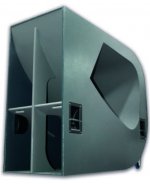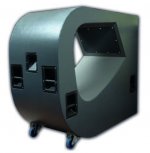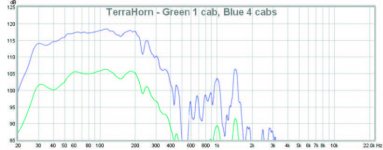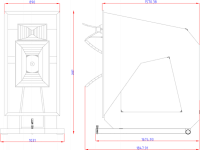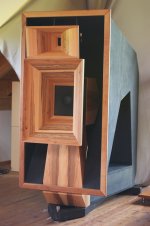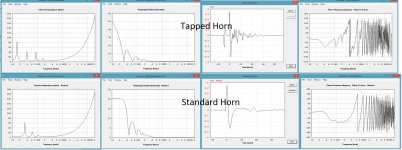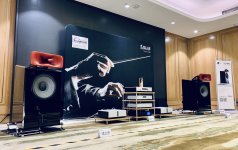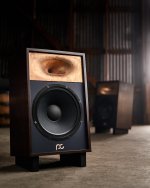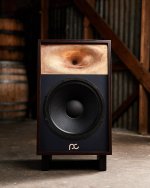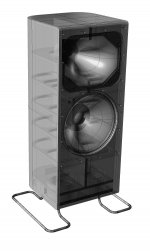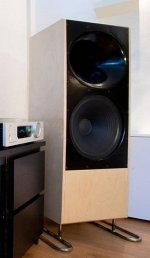Rather than get bogged down in the logistics look at the aim of it. Multiple sources when combined properly can create an even bass response across a fairly large area reducing spatial variation and the most important locations can be prioritized for flat response rather than minimal variation.
If you get that then you did it right, if you didn't then you didn't get the best out of it.
If you can get less response variation and better frequency response from using other techniques great. More data than "I don't like it" would be helpful 😉
There is nice free software that can work out the level delay and EQ settings for the target you set
Multiple Subwoofers: Optimize Them With Multi-Sub Optimizer Software
That is indeed a nice piece of freeware. I wish I had it when i did all my multiple subs experiments back in the early 2000's.
Then, I had built a large room, about 350 m^3, that doubled as a purposely built audio room and a rec hall for my kids. Internal dimensions were carefully chosen via room mode calculators. Lot's of XLR wall plates, and switched AC receptacles for speaker/amp placement experimentations, including 5 locations in the ceiling. The room was measured/acoustically treated to bring RT60 to 0.3s across the board. Live end/dead end. Peavy Media Matrix DSP, which was quite advanced at its time, for surround sound and sub management.
Had a total of 9 subs to play with. My measurement technique was to put a sub at listening position, and then go mic various room locations. Where i got the smoothest response, there went a sub. Quickly found out that corners work, for what I'd call the main front subs. Then with those main subs on, I'd move the listening position sub to a new listening position, and again go around and mic the room looking for a smooth response spot...and a place to put another sub. (sub xovers were all between 80Hz and 100Hz)
It worked pretty well to even out the level of sine waves as i walked around an expanded listening area. Which was the best audible test for smooth response over the area, that i could come up with.
But after all that, I found i liked the sound of the front corner subs alone. More focus. More dynamic realism.
Plus, multiple subs messed up the rear channels' bass location (which shared a common double 18" hung from the ceiling between them...lotta fun hanging a 220lb box from a 12ft ceiling by yourself 😱...all speakers other than main subs were flown)
Anyway, point of all that was to show real care was taken in trying out multiple subs.
Would i try it again if i still had that room? Absolutely, with the help of the software you linked. Always willing to learn/relearn.
Plus Smaart has advanced to where multiple mics can continuously and independently remove time-of-flight from their transfer functions.
I might try that in my current room just to see.
But i really doubt it will change my mind, my SQ comparison is totally locked into a comparison against outdoors.
Besides, will multiple subs ever be able blow empty beer cans backwards at 5+m? 😛
Yes, i know such calculators oh so well. I agonized greatly over which "optimum" ratio set to use in the room just described in previous post.
In the end, post construction and measurement, I realized how loose the calculators are against reality.
Loose due to basic construction stiffness that varies between floors, walls, and ceiling. Loose from to irregular shapes due to hallways, connecting rooms, etc,
Like any model we use, devil's in the model's underlying assumptions and necessary simplifications.
Regarding corners, I have no real objection to using them, in fact in my room the three subs are pretty much in the corners. It's certainly the most convenient location. It's theoretically not the best place, but it can certainly be made to work.
I think using a crossover to the subs is wrong. Crossovers are needed when the source distances are large compared to a wavelength as they reduce the dual source interference. But this is not an issue at LFs and blending all the sources works better.
Room mode calculators are rough guesses due to the complexity of real rooms and the nature of the equations being used. They are approximations that work correctly only in empty rigid wall rooms, which is hardly what a real room is.
The best bass that I have heard is in a large auditorium - better than outdoors. The reverberation extends the time signal and enhances the ears perception through what is called the Time-Intensity tradeoff - signals appear louder as their duration is extended (up to a point.) It was this realization that had a big effect on my thinking. Large rooms have high LF modal density and I realized that it was this higher modal density and reverberation that is beneficial. Minimizing the modes is not what one wants to do.
I think using a crossover to the subs is wrong. Crossovers are needed when the source distances are large compared to a wavelength as they reduce the dual source interference. But this is not an issue at LFs and blending all the sources works better.
Room mode calculators are rough guesses due to the complexity of real rooms and the nature of the equations being used. They are approximations that work correctly only in empty rigid wall rooms, which is hardly what a real room is.
The best bass that I have heard is in a large auditorium - better than outdoors. The reverberation extends the time signal and enhances the ears perception through what is called the Time-Intensity tradeoff - signals appear louder as their duration is extended (up to a point.) It was this realization that had a big effect on my thinking. Large rooms have high LF modal density and I realized that it was this higher modal density and reverberation that is beneficial. Minimizing the modes is not what one wants to do.
This post contains additional explanation of low frequency transitions to main channels.
The typical small room has discrete modes from about 30 Hz to about 120 - 150 Hz. It can be shown (my PhD thesis) that the more LF sources (LFs) one has in the modal region, the smoother the net response will be throughout a fairly large space - even the entire room. I consider all sources to be relevant - mains, subs, Ultra low subs. They all contribute and must be blended and analyzed as a group.
It is highly likely that the number of LFs needed to yield a smooth result (minimum frequency and spatial variations,) will drop as the frequency goes up. This means that we can expect the sub LFs to fade away as the frequency goes non-modal (LP filter, but all at different frequencies, slopes, etc.) This is exactly what the optimized rooms that I have dealt with have done. At the very lowest frequency, there is one mode and any source anywhere will drive this. So only one LFs is required to go down to the lowest mode. As the mode number(s) goes up, more and more spaced subs are required, but each will have diminishing returns. One will never do the job, two gets probably twice as good depending on where the subs are, three gets better by about 25%, four, at best a 15% improvement. To me, three seems to be a good choice, that's what I have. But then as the frequency gets to the mid modal, if the mains are still in the picture (I have five LFs) a very smooth response will result. Then the sub-LFs fall away and only the mains are playing. The transition is virtually impossible to measure or detect audibly.
Outdoor bass.
Attachments
Peter Morris:
"FWIW a normal horn’s behaviour is better than a tapped horn in all respects. The tapped horn is a useful compromise when the size of the standard horn is an issue. You can get good bass extension and efficiency out of a relatively small box."
"FWIW a normal horn’s behaviour is better than a tapped horn in all respects. The tapped horn is a useful compromise when the size of the standard horn is an issue. You can get good bass extension and efficiency out of a relatively small box."
Attachments
I have confidence that mark 2021 can do better than mid 2000's mark 🙂 It is a difficult thing to get right and sometimes nearly right is worse than half arsed. Earl and Harman didn't put effort into writing software to work it out because it was easy to do by hand 😉Anyway, point of all that was to show real care was taken in trying out multiple subs.
Would i try it again if i still had that room? Absolutely, with the help of the software you linked. Always willing to learn/relearn.
Plus Smaart has advanced to where multiple mics can continuously and independently remove time-of-flight from their transfer functions.
I might try that in my current room just to see.
This is a bit of a problem when it comes to objectivity.But i really doubt it will change my mind, my SQ comparison is totally locked into a comparison against outdoors.
Besides, will multiple subs ever be able blow empty beer cans backwards at 5+m? 😛
Use the same subs than can blow your beer cans if you like, just because they can be small doesn't mean they have to be.
I think using a crossover to the subs is wrong. Crossovers are needed when the source distances are large compared to a wavelength as they reduce the dual source interference. But this is not an issue at LFs and blending all the sources works better.
The best bass that I have heard is in a large auditorium - better than outdoors. The reverberation extends the time signal and enhances the ears perception through what is called the Time-Intensity tradeoff - signals appear louder as their duration is extended (up to a point.) It was this realization that had a big effect on my thinking. Large rooms have high LF modal density and I realized that it was this higher modal density and reverberation that is beneficial. Minimizing the modes is not what one wants to do.
Minimizing the modes is not what one wants to do.
Regarding a crossover to the subs. I take it you mean you do not high pass the mains. That i can easily see fitting into the multiple strategy.
But surely you low pass the subs, right?
What type, freq, and order do you use?
(I can not even remotely imagine using subs without a low pass. Otherwise, aural localization of any sub away from the mains would jump out like crazy, huh!)
For me, localization begins around 100Hz, and ideally subs would all be low passed around 80Hz, to be sure of not hearing any localization. Other than any subs co-located with mains, which could of course run higher.
Hearing any localization from distributed subs is the mud i was talking about.
I've heard great bass in auditoriums too.
That big room I built had awesome bass...everyone should hear/feel what two Labhorns stacked pointing into a corner can do in a room of that size (pointing in to quasi-extend the FLH horn mouth.)
Visceral barely begins to describes it.
I'll research the Time-Intensity tradeoff you mentioned, thx.
Perhaps related, i recently saw on an old Dick Heyser video, that the Haas effect keys off peaks much more so than comparatively level sounds. And that a sting of peaks within 20ms of each other can keep the Haas effect going on and on....or at least move the time further out before the perception of reverb normally kicks in..
Is this related to Time-Intensity, or do you even agree with it?
I continue to have good luck minimizing modes, and enjoy the ready comparison to my personal gold standard, outdoor listening.
I have confidence that mark 2021 can do better than mid 2000's mark 🙂 It is a difficult thing to get right and sometimes nearly right is worse than half arsed. Earl and Harman didn't put effort into writing software to work it out because it was easy to do by hand 😉
This is a bit of a problem when it comes to objectivity.
Use the same subs than can blow your beer cans if you like, just because they can be small doesn't mean they have to be.
You have more confidence than i do, about this.
I had good measurement tools even back then. Got Smaart in 2002, along with a super handy piece of measurement gear called the AudioToolBox from Terresonde (still use today).
And spent at least 3-5 years trying/measuring different combinations of subs and placements, where i'd live with anything i liked for a while to avoid short term bias. Then try something else. Kept coming back to a single corner stacked sub arrangement for 2 channel sound. Along with continued acoustic room treatments.
The principle of reciprocity, along with multiple cheap mics, and a whole lot of careful time trying many grass roots experiments, can go a long way and be hard to beat ime/imo...
(I guess i've been a 'measurements top simulations' guy forever...)
And in the end, ears still top all, huh?
Hey, How can beer cans flying lack objectivity??...
They either fly or they don't 😀
Cheers mate 🙂
Yes, listening outside eats power/SPL for breakfast. But everybody should at least have attempted it once with their own stereo setup.
Regards
Charles
Regards
Charles
Not being a a clean freak, I break up standing waves with LP CD & book racks, urethane stuffed couch & chairs, carpet on the floor, coffee table right in front of the listening spot, acoustic tile on the ceiling, a piano & two full size organs, two organ speakers. My music room is 14'w, 11' tall, 33' long with more wood tables & chairs, bookshelves in the dining room & another piano, wood cabinets tables & chairs in the kitchen. Double door sized entry between music room & dining room. My pole mounted SP2-XT fired all the way into the kitchen effectively @ 1 W, although my major listening was in the front room 14' from the speakers. SP2-XT fire the highs down at the audience heads. Bass down to 54 hz was quite nice, and 32' organ stop and the low octave piano tracks were not noticably low volume. There was probably some room gain of bass by having the speakers 2' away from the front wall, which was 1" thick plaster.life is so much more simple at just, one, single sweet spot....I sympathize with you guys
I would hope after 5 to 10 years of cutting, trying measuring and reading that it would have some positive influence on your skill and knowledge.You have more confidence than i do, about this.
Trying things for yourself is a great way to find out what you like and don't like but it is also difficult to remove bias and that can be damaging if the wrong conclusion was drawn. Because it was based on "experience" it will be almost possible to overcome.The principle of reciprocity, along with multiple cheap mics, and a whole lot of careful time trying many grass roots experiments, can go a long way and be hard to beat ime/imo...
I see them as complementary rather than competing. What is perceived is of ultimate importance matters, but humans are easily fooled often by themselves so valid listening tests are extremely important but are not easily done.(I guess i've been a 'measurements top simulations' guy forever...)
And in the end, ears still top all, huh?
Hey, How can beer cans flying lack objectivity??...
I was referring to this not the beer cans
But i really doubt it will change my mind, my SQ comparison is totally locked into a comparison against outdoors.
Unless any of those things act as tuned absorbers they will have almost no effect on the lowest modes in a room. Adding early reflections through objects near to the listening position is something I try and avoid where possible.Not being a a clean freak, I break up standing waves with LP CD & book racks, urethane stuffed couch & chairs, carpet on the floor, coffee table right in front of the listening spot, acoustic tile on the ceiling, a piano & two full size organs, two organ speakers.
Is there a reason (outside of inconvenience) to not treat a room no less than a transmission line? Or sealed enclosure?
It's far more complex than either of those concepts. But at LFs a sealed enclosure works OK as an analog, as long as the room really is "sealed". The vast majority aren't.
Perceptually neither model works above a few hundred Hz., at best, and the major portion of perception is well above that limit.
Perceptually neither model works above a few hundred Hz., at best, and the major portion of perception is well above that limit.
During a phase of trying out Wayne Parhams helper/flanking woofers in the spirit of multi-sub, I found I could effect changes pertaining to issues from early reflections of the main speakers going up to 1kHz in this case, by placing the woofers nearby the listening triangle, either between or just outside of the mains, while still making a positive difference at lower whole room mode frequencies.. essentially a lower full-range sub. Only simple (though careful) crossing was needed.Perceptually neither model works above a few hundred Hz., at best, and the major portion of perception is well above that limit.
I was pleasantly surprised.
Building an acoustically sealed room is expensive, like any acoustically designed room (sealed or not).
I've never felt the need to treat any of my (past) living rooms, though, admittedly, these were mostly quite large, not hugely absorbent and with some leakage.
Tbh, I wouldn't want to listen to music in a dead "control room", because imo these tend to suck out much of the musical enjoyment due to a lack of ambience, which is what these are designed for > mixing and mastering.
As long as early reflections are controlled (by using horns) and the impact of room modes isn't too disruptive (proper placement often helps a lot) I do not see the need for multiple subs or treatment. Contrary to many (most?) audiophiles I listen to music in its entirety, instead of maniacally focusing on the quality of the recording, soundstage, micro details and what have you.
For music production it's another story altogether.
In the light of this thread, a few 2 way loudspeaker systems that I came across in the last few weeks.
The first one is made in Taiwan, for which a clone of the Sony SUP-H11 horn is used. Drivers are 15 + 1.4" of unknown (probably Asian) origin.
The second system is manufactured in Tasmania and consists of a bronze waveguide + 1" driver and a FaitalPro 15PR400. XO at 900Hz.
The last one is a Finnish DIY project for which 1" + 15" 18Sound drivers were used. The horn appears to be a modified FaitalPro LTH142 and the woofer looks like a 15MB606.
I've never felt the need to treat any of my (past) living rooms, though, admittedly, these were mostly quite large, not hugely absorbent and with some leakage.
Tbh, I wouldn't want to listen to music in a dead "control room", because imo these tend to suck out much of the musical enjoyment due to a lack of ambience, which is what these are designed for > mixing and mastering.
As long as early reflections are controlled (by using horns) and the impact of room modes isn't too disruptive (proper placement often helps a lot) I do not see the need for multiple subs or treatment. Contrary to many (most?) audiophiles I listen to music in its entirety, instead of maniacally focusing on the quality of the recording, soundstage, micro details and what have you.
For music production it's another story altogether.
In the light of this thread, a few 2 way loudspeaker systems that I came across in the last few weeks.
The first one is made in Taiwan, for which a clone of the Sony SUP-H11 horn is used. Drivers are 15 + 1.4" of unknown (probably Asian) origin.
The second system is manufactured in Tasmania and consists of a bronze waveguide + 1" driver and a FaitalPro 15PR400. XO at 900Hz.
The last one is a Finnish DIY project for which 1" + 15" 18Sound drivers were used. The horn appears to be a modified FaitalPro LTH142 and the woofer looks like a 15MB606.
Attachments
Last edited:
Nice speakers. Looking at the first one reminds me of my intention to try my four 15nlw9500s in my MTMs one fine day.
The last one may probably use an XT1464 when I look at its shape and size. A bit like these guys did:
Hifi-Selbstbau - HighLive
Regards
Charles
The last one may probably use an XT1464 when I look at its shape and size. A bit like these guys did:
Hifi-Selbstbau - HighLive
Regards
Charles
- Home
- Loudspeakers
- Multi-Way
- Is it possible to cover the whole spectrum, high SPL, low distortion with a 2-way?
